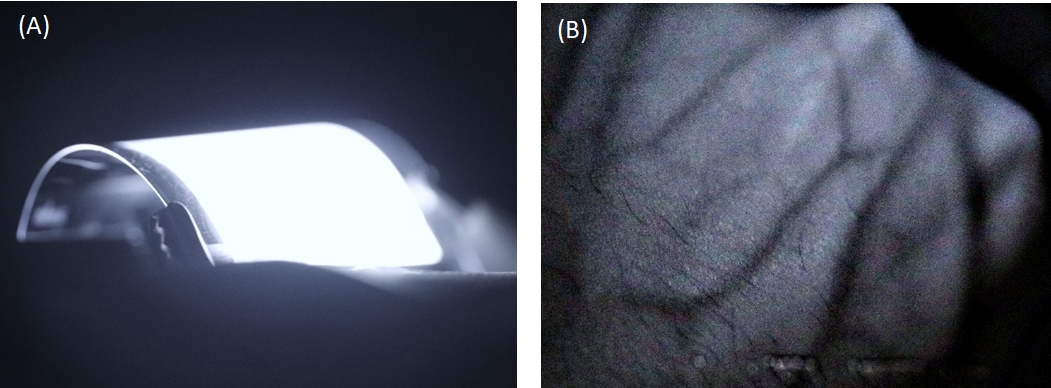December.30, 2019 - 16:11 — YiningChen 305 pageview
Researchers at National University of Singapore (NUS) developed highly efficient, large-area and flexible near-infrared LEDs for new wearable device technologies.
A research team led by Prof TAN Zhi Kuang from the Department of Chemistry and the Solar Energy Research Institute of Singapore (SERIS), NUS has developed high-efficiency near-infrared LEDs which can cover an area of 900 mm2 using low-cost solution-processing methods. The result was published on Nature Photonics on December 2, 2019.
According to the research, the flexible near-infrared LEDs are much bigger than the sizes achieved in other reports, and open up a range of new applications. Their devices employ a novel perovskite-based semiconductor, which is a direct-bandgap semiconductor that is capable of strong light emission. By using a new device architecture, the research team is able to precisely tune the injection of electrons and holes (negative and positive charges) into the perovskite, such that a balanced number of opposite charges could meet and give rise to efficient light generation. The team also found that this improvement allowed large-area devices to be made with significantly higher reproducibility.

(A) shows uniform electroluminescence from a large-area flexible perovskite LED
(B) shows illumination with near-infrared perovskite LED on the fist, showing the imaging of subcutaneous blood vessels. (Image: Nature Photonics)
The research team noted that the hole-injection efficiency is a significant factor that affects the performance of the devices. By using an organic semiconductor with a shallower ionisation potential as part of the device structure, the hole injection and charge balance can be improved. As a result, the devices can emit light at efficiencies (external quantum efficiency of 20%) close to their theoretical limit, and additionally reduced the device-to-device performance variation, hence enabling the realization of much larger devices.
The co-author, Prof. Zhi-Kuang Tan said, “Some of the technologies that our device could enable may include covert illumination in facial recognition or augmented reality/virtual reality eye-tracking technologies. In particular, we have demonstrated that our LEDs could be suited for applications involving subcutaneous deep-tissue illumination, such as in wearable health-tracking devices.”
“These materials could also be developed to emit light in the full range of visible colours. They could therefore be applied in newer generations of flat-panel electronic displays,” he added.
Contact: Mr. Victor.Y
Phone: +86 189 1799 2510
Tel: +86 21 6787 1275
Email: info@shlskj.com
Add: No.2 Zhenye Road, Songjiang District, Shanghai, China